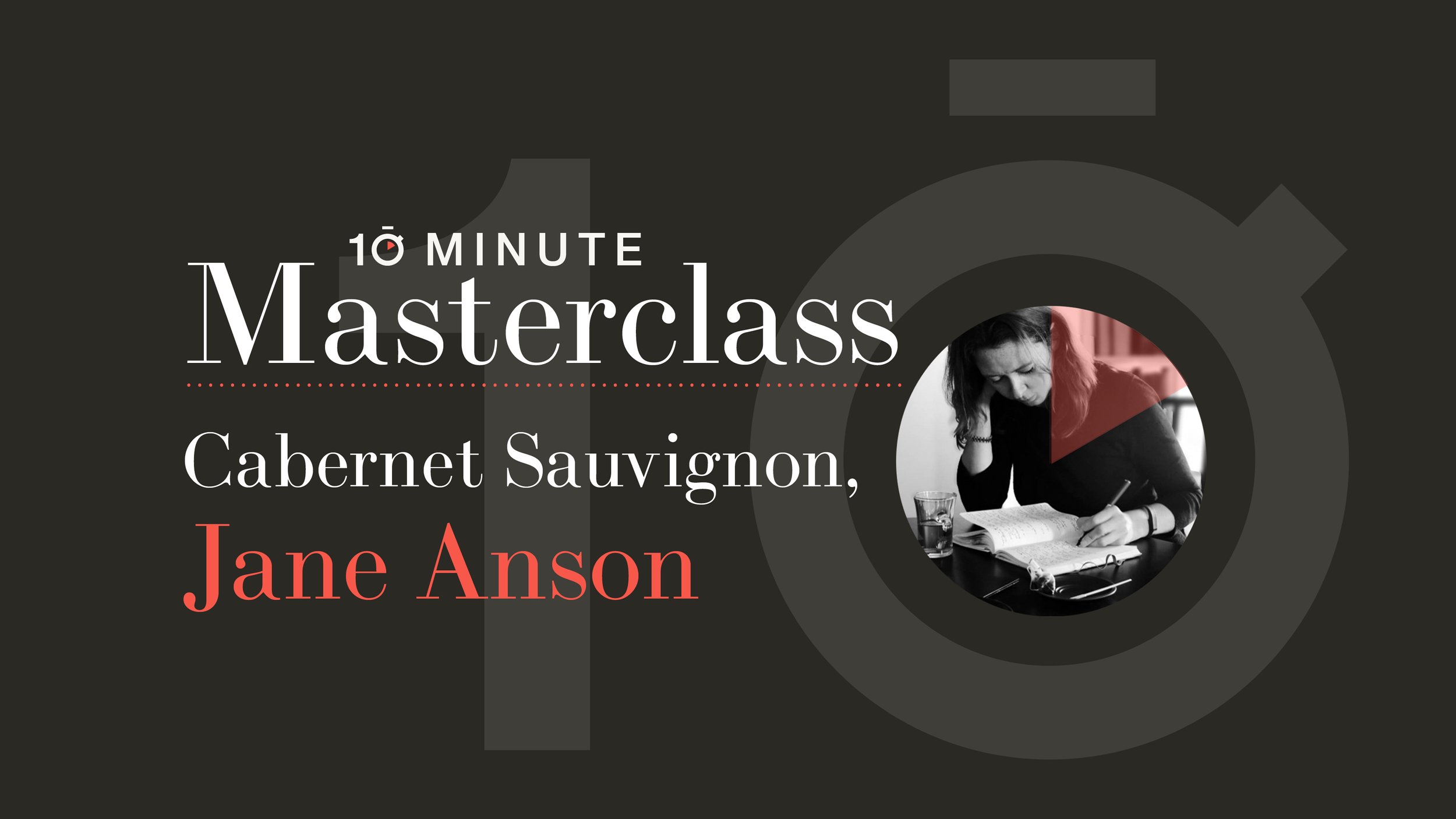▻ Cabernet Sauvignon with Jane Anson
In conversation with Jane Anson
Episode Summary:-
Cabernet Sauvignon is known as “the king of grapes.” In this 10 Minute Masterclass, Jane Anson and Sarah Kemp look at the world’s most-planted wine-grape variety (the table grape variety Kyoho is more widely planted). Jane explains that one of the reasons for its popularity is that people love its high tannins, structure and its dark fruit flavours. When Cabernet Sauvignon is unripe, it has a taste of green bell pepper, which comes from an aroma compound called pyrazines. Around a million acres is grown worldwide, with China being the country with the most planted.
When a wine is labelled Cabernet Sauvignon, it is not always 100% from that variety. Jane and Sarah discuss the fact that there are no hard-and-fast rules prevailing – different rules and regulations apply in different countries and regions. Jane explains that Cabernet Sauvignon is often blended because its structure needs filling out, for example in Bordeaux with Merlot and Cabernet Franc. It is grown widely, but especially in countries and regions which want to establish themselves as a high-quality wine region. The parents of the grape are Sauvignon Blanc and Cabernet Franc; a natural cross took place in the vineyards of Bordeaux in the 17th century. However, it is still a relatively young grape variety, and its DNA was only established in 1997 at the University of California Davis in California. Cabernet Sauvignon is a parent with Grenache to the Marselan grape, which is today successfully growing in China. It was first bred in 1961.
Internationally famous names abound with this grape. Sarah and Jane pick out some of the most well-known, from Torres’s Mas Las Planta, Penfold’s Bin 707, Screaming Eagle to the First Growths of Bordeaux. While the First Growths are normally a blend, there are rare exceptions, such as the 1961 vintage of Château Lafite 1961, which is 100% Cabernet Sauvignon. Sarah names Margaret River and Washington State as two of her favourite regions for Cabernet Sauvignon, while Jane picks Napa Cabernet and aged Medoc. She points out that Cabernet Sauvignon doesn’t always need to be blended; for example, in California it ripens easily, so it doesn’t always require blending.
Jane’s obscure fact is the story of how the First American Consul in Bordeaux, William Lee, sent 4,500 cuttings from Châteaux Lafite, Margaux and Haut Brion to the Pennsylvania Vine Company. This was in 1805, half a century before the 1855 classification was established.
““Many regions which want to establish themselves as high-quality regions will use Cabernet Sauvignon, as it will give them wines that will age.” ”
Running Order:-
-
0.00 – 6.24
“China is the country with the most Cabernet Sauvignon.”
– What Cabernet Sauvignon tastes like.
– How much is grown around the world.
– The different rules for labelling wine as Cabernet Sauvignon.
– The ability of Cabernet Sauvignon to age.
– The parentage of Cabernet Sauvignon. -
6.25 – 10.35
“Without question, some of the world’s longest-living wines come from Cabernet Sauvignon.”
– Cabernet Sauvignon’s most famous names.
– The Lafite vintage which is 100% Cabernet Sauvignon.
– Jane and Sarah’s favourite regions for Cabernet Sauvignon.
– Jane’s obscure Cabernet Sauvignon fact.
RELATED POSTS
Keep up with our adventures in wine







John Stimpfig talks to Axel Heinz, who caused shockwaves last year when he left Ornellaia and Masseto to head back to Bordeaux to run Château Lascombes.